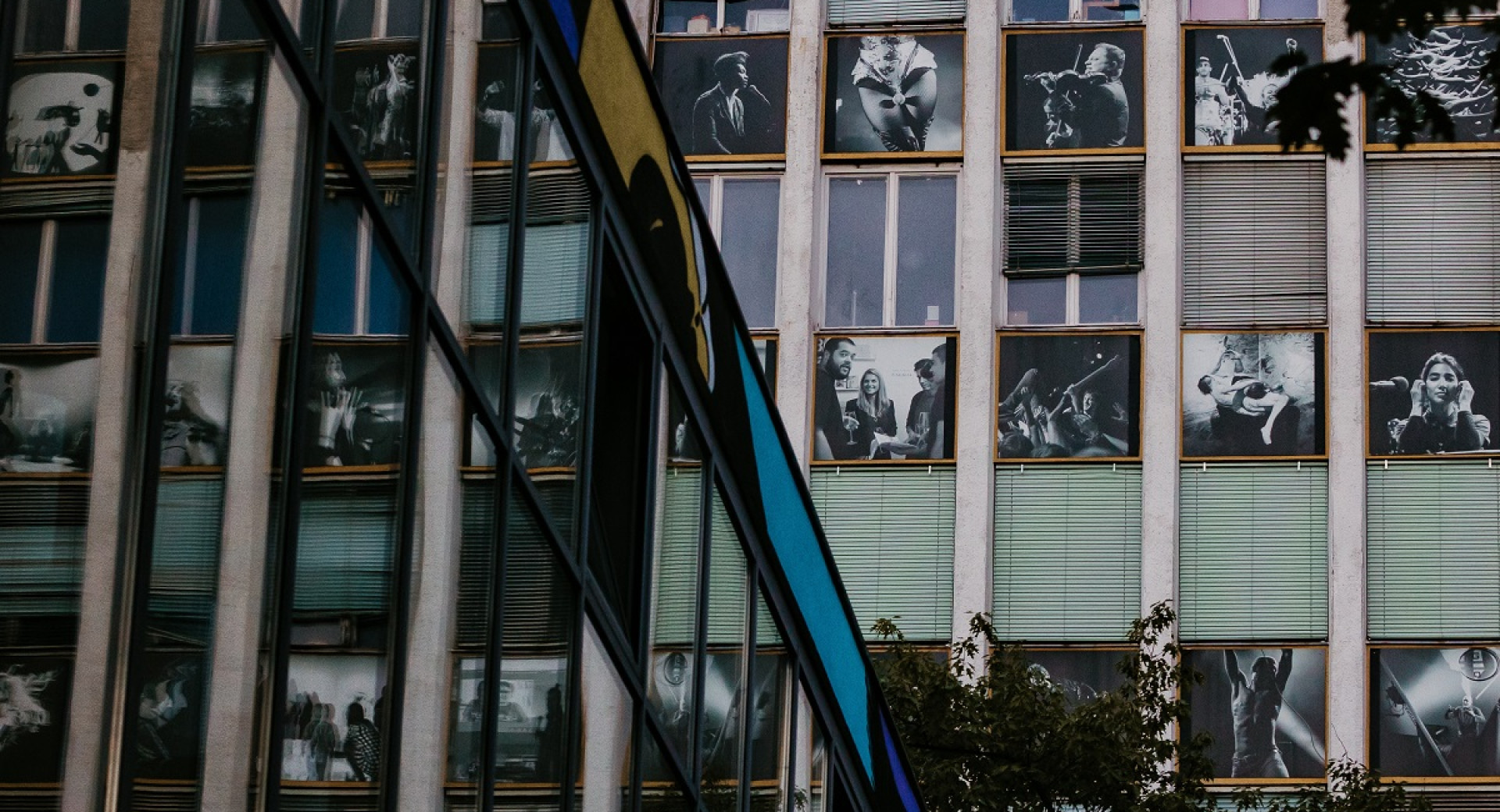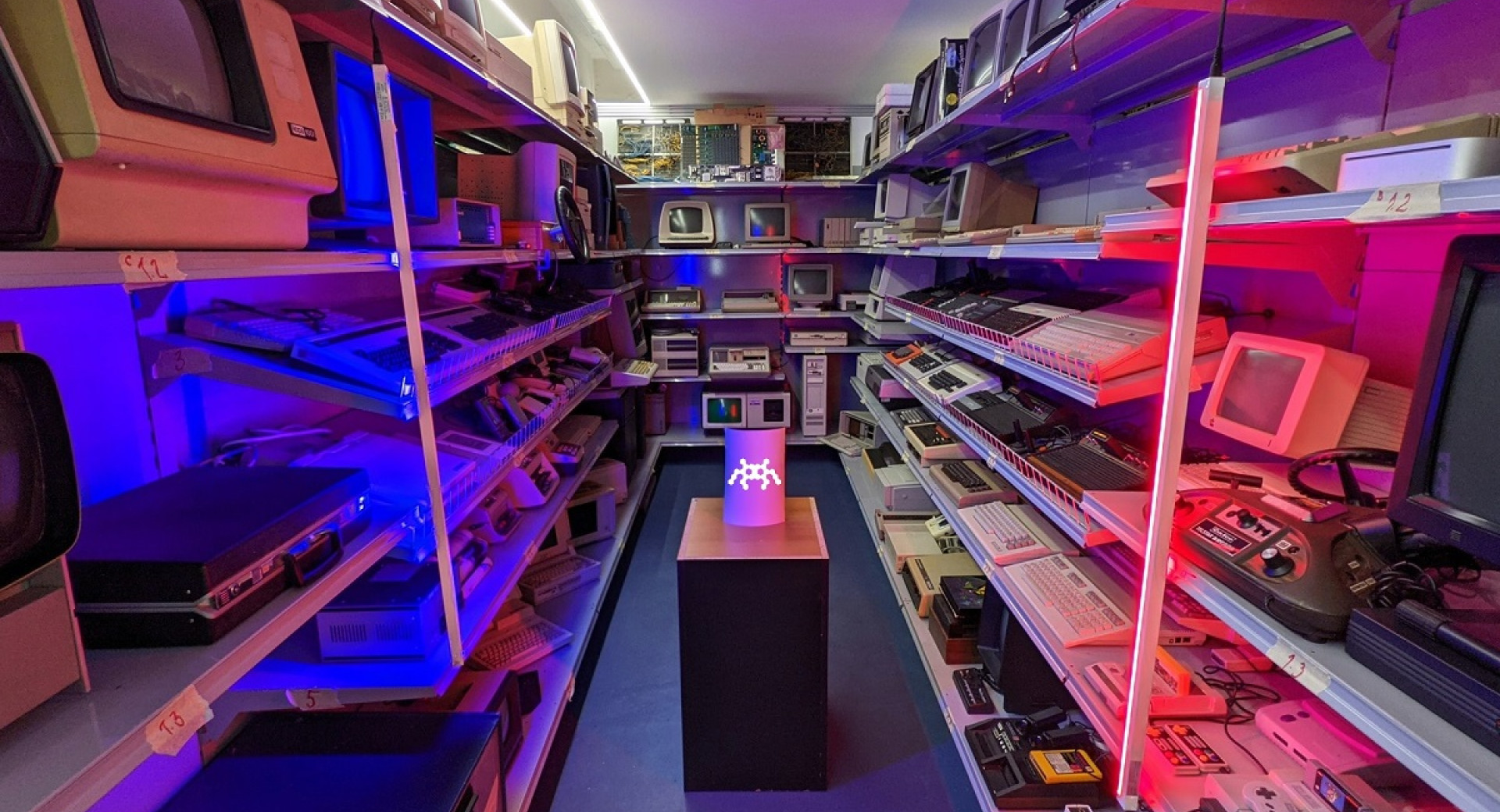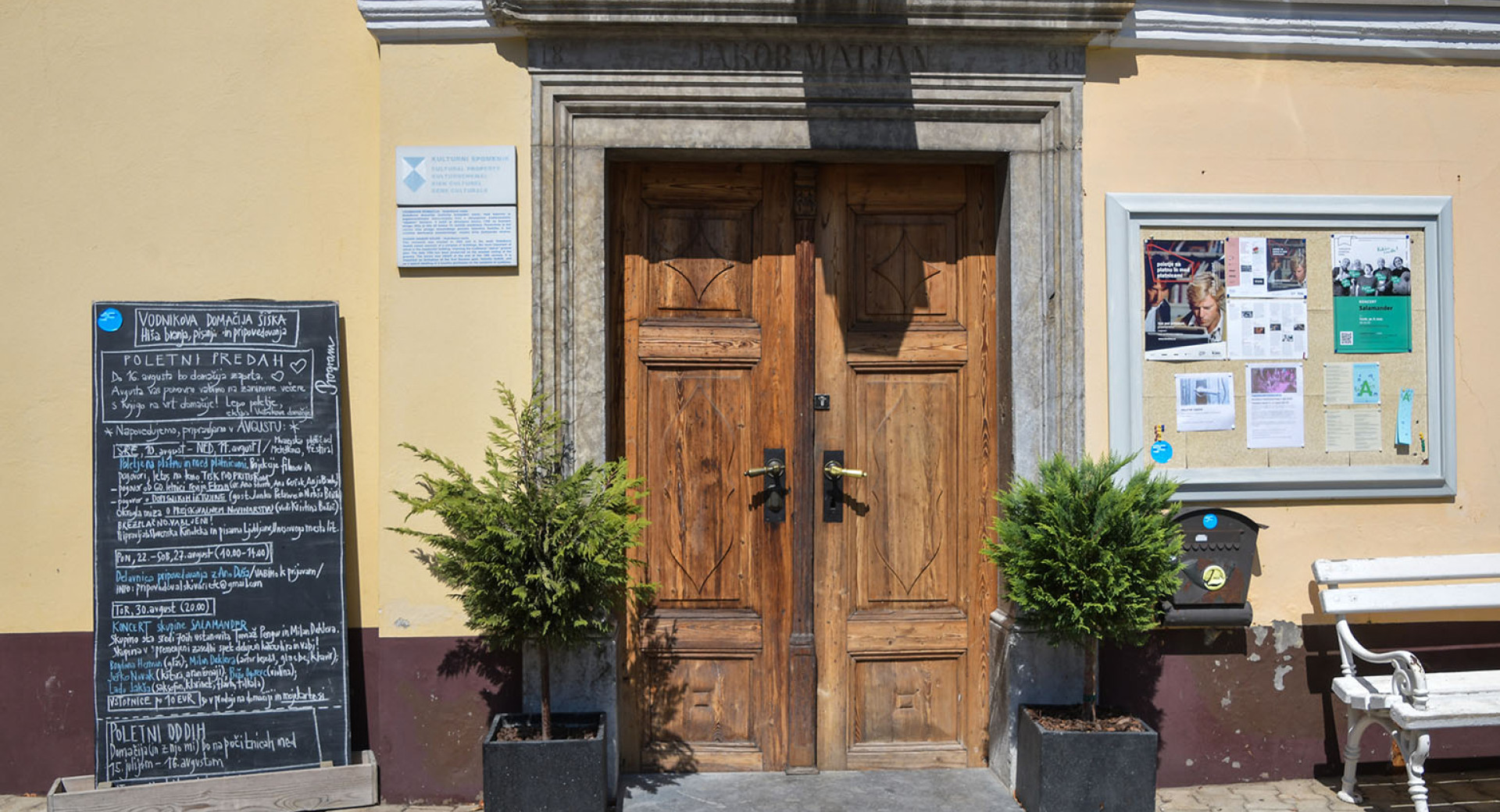Meet Šiška: Ljubljana’s Secret Cultural Quarter
“Je v Siski se kaj odprtega?”
“Is anything still open in Šiška?” sang Vlado Kreslin, Slovenia’s most popular folk-rock musician, in one of his songs. Back in the early 90s, the answer would have been “not much.” Today, it’s an entirely different story. Šiška is a lively cultural quarter of Ljubljana, with many points of interest to draw the intrepid tourist who is in search of something alternative and intriguing, beyond the bustling touristic center of the city. But it’s also something of a secret—ask folks from elsewhere in Ljubljana and they might not be aware of just how cool Šiška has become, and how many points of interest await visitors willing to explore beyond Ljubljana’s cozy center.

Start walking or bicycling north from the city center, and you’ll enter the Šiška neighborhood within minutes. It technically starts right around Tivoli, Ljubljana’s leafy central park. It extends quite a way northward, but all of it can easily be accessed without getting into a car.
It’s a proper, bustling, largely residential neighborhood, but with a central artery, Celovška Street, that is lined with shops and points of interest.
Let’s consider a few of the spots that you might explore in this dynamic neighborhood.

Kino Šiška, foto: archive
Kino Šiška
Ask a Slovenian about Šiška as an art center, and the first thing that will come to mind is The Kino Šiška Cultural Center. Established in 2009, this dynamic venue has evolved into a pulsating center for contemporary arts, music, and cultural expression, earning its rightful place as a cherished gem in the city's cultural landscape.
The venue's name, "Kino Šiška," pays homage to its roots as a former cinema (kino). Today, it continues to honor its heritage by serving as a stage for diverse artistic disciplines. The sprawling space houses a concert hall, art gallery, recording studios, rehearsal spaces, and a welcoming café-bar that beckon both artists and audiences alike. This multifaceted setup allows Kino Šiška to host an array of events, from electrifying live music performances to thought-provoking art exhibitions and avant-garde theater productions, with a special focus on supporting local talent.
One of Kino Šiška's unique strengths lies in its programming diversity. It proudly showcases a wide spectrum of artistic genres, including indie rock, electronic music, contemporary art exhibitions, workshops, lectures, and much more. This diversity fosters a sense of inclusivity, ensuring that there's something for everyone within its walls.
Beyond its role as a cultural venue, Kino Šiška fosters a sense of community, where like-minded individuals come together to celebrate art and creativity. It's a place where the boundaries of artistic expression are constantly pushed, challenging visitors to expand their horizons and embrace the avant-garde.
When one of my artist friends held a performance, this was the venue. The cool alternative music acts that aren’t quite popular enough to fill a stadium, but have enthusiastic cult followings? This is where they’ll play. It’s truly a multimedia center for creatives, who might just stop by for a cold brew coffee or a microbrew beer, then pop inside for a concert or talk just because, knowing how knowledgeable and cool the staff are, they’ll feel assured that whatever is on at Kino Šiška will be worth checking out.

CQ Šiška, foto: Matjaž Tavčar
Industrial Heritage
The second association that most Slovenians will have with Šiška is about its architecture—and not always in a complimentary sense, but in a sense that is of interest to tourists with an eye for social history. To be clear, there are a lot of not-very-attractive apartment towers in Šiška if you go northward far enough. While they may not be winning any architectural awards (we’ll get to the architectural treasures later), they are important historical landmarks because most were built after the Second World War to provide housing for one of the more important factories in nascent Yugoslavia: the Litostroj factory.
The Litostroj factory is a historical industrial complex that has played a significant role in the country's industrial development—first as Yugoslavia, later as independent Slovenia. Established in 1947, Litostroj initially focused on producing hydroelectric turbines and equipment for the burgeoning Yugoslavian energy sector. Over the years, it grew into a major engineering powerhouse, contributing to both domestic and international projects.
The factory was a key cog in the economy of Yugoslavia, a country that had to build itself largely from scratch following victory in the war. Major new factory projects such as this one required an extensive workforce, and workers needed places to live. Yugoslavia was not a wealthy country, but it had to rebuild itself after the damage suffered under Fascist occupation, as well as build and expand in order to function as an independent nation. This led to a lot of Socialist housing projects which did not enjoy the luxury of attention to aesthetics—they needed to house a lot of people quickly. So Šiška sprouted numerous blocs that are still in use today.
Ljubljana has very little in terms of not-so-attractive Socialist bloc architecture (other cities, like Belgrade, seem to primarily consist of such structures), making Šiška a point of interest in an otherwise architecturally beautiful city.
Today, the Litostroj factory stands as a symbol of Slovenia's industrial heritage and engineering prowess. The factory remains a vital part of Ljubljana's industrial landscape, embodying the spirit of progress and industrial excellence that has defined the region for decades.

The Computer Museum, archive The Computer Museum
The Computer Museum
One of the newer additions to the Šiška scene is the Computer Museum. The exhibits here are a tribute to the evolution of computing technology, showcasing the profound impact it has had on society. Here you’ll find all manner of computing artifacts, spanning from the earliest mechanical calculators to the cutting-edge technology of today. One of its highlights is the recreation of Charles Babbage's Analytical Engine, a mechanical computer designed in the 19th century. Visitors can also explore the development of early computers, with exhibits featuring iconic machines like the Commodore 64, Apple II, and IBM PC. The museum showcases how these devices revolutionized homes and workplaces, making computing accessible to the masses.
A significant portion of the museum is dedicated to the history of software and the birth of the internet: the origins of the World Wide Web and its transformative impact on global communication. Exhibits also illustrate the evolution of programming languages, from COBOL to Python, and the pivotal role they played in shaping the digital world.
The Computer Museum doesn't limit itself to the past; it's also a hub for exploring emerging technologies. Interactive displays and demonstrations of artificial intelligence, virtual reality, and robotics highlight the ongoing evolution of computing. That interactive aspect is particularly appealing to families with younger children.
In addition to its impressive collection, the museum hosts workshops, lectures, and events, making it a vibrant educational center. It's a must-visit for tech enthusiasts, history buffs, and anyone interested in understanding the profound influence of computers on our lives.

Church of st. Francis of Assisi, foto: Miran Kambič
The Architectural Masterpiece of Šiška
I first visited Šiška to see a church there, the Church of Saint Francis of Assisi, that was designed by the subject of my doctoral thesis, Slovenian Modernist-era architect Joze Plecnik, whose work is on the UNESCO World Heritage list. You’ll find Plecnik’s buildings throughout the city—Ljubljana bears his imprint more so than just about any city in the world carries the feel of a single architect. We’ll dive into Plecnik’s Ljubljana elsewhere, but now that we’re exploring Šiška, let’s take a look at the neighborhood’s most impressive building.
The Church of Saint Francis of Assisi was begun in 1925, just a few years after Plecnik moved back to Ljubljana. This had been his hometown, but he had studied and worked in Vienna, then in Prague, before returning. In Prague, he had built the Czech Church of the Sacred Heart. This would be his first church in Ljubljana, completed in 1931.
At first glance, the building recalls a Greek temple. That’s by design. Plecnik had the idea to develop Ljubljana architecturally as a “new Athens,” and wound up with commissions to build most of the public buildings that you would have found in ancient Athens (a stadium, necropolis, acropolis, market, amphitheater). Here is his Catholic Modernist version of a Greek temple.
The large square nave is surrounded by an indoor colonnade on all sides, inverting the outdoor columns that would skirt a Greek temple. A Greek temple would have had columns outside, here they are inside. The columns themselves are made of a surprising material—unclad raw brick. This was a decision borne of frugality but out of which Plečnik made something wonderful. This was trait of his throughout his career, particularly for his church projects, to which he dedicated himself with extraordinary diligence and for which he rarely accepted any form of payment. In short, he designed churches to be built as cheaply as possible, and almost never charged for his services, as a charitable act. It was Plečnik's original intention to plaster over the brickwork but, after seeing how good the brick looked, he decided to forgo the plaster and leave the brick façade.
The flat wood-beam ceiling and clerestory windows (the clear glass windows at the top of the walls to let light in) give the impression of an early Christian basilica. The wooden beams are there for their beauty—the church roof is actually held up by hidden steel beams.
The Church of Saint Francis of Assisi was Plečnik’s first monumental project in Ljubljana, and it gave his fellow Slovenes a taste of his capabilities. While it was popularly liked, the entourage of a visiting bishop was not convinced by the novelties it incorporated—one visitor called it a “pagan temple,” not a church. He was actually correct but didn’t intend it as a compliment.
There were enough changes to standard church architecture that it gave some viewers pause. For instance, in an interesting move, Plečnik altered his first plan for the location of the main altar, moving it forward in the church so that it projected out into the congregation. At the time this was an unusual alteration, but it proved portentous. The Second Vatican Council would recommend it for all future churches. Plečnik had the last laugh over the curmudgeonly bishops.
The Church of Saint Francis was something of a pet project for Plečnik, who added and altered long after it had been consecrated. For instance, he added a pyramid-shaped altar screen and a statue of Saint Francis as late as 1952. He also designed as many of the interior elements as he could, from the hanging lanterns to lighting sconces on the walls, from the altars to the pulpits. The lanterns themselves represent an astonishing diversity, each design unique, in combinations of brass, bronze, and colored glass.
There may be historical points of reference in Plečnik's buildings, but the recognizable elements have been appropriated and made new, made Plečnik's own. As with so much of Plečnik's work, the ingredients are traditional (columns, cornices), but they are arranged and combined in a new manner that transcends individual historical periods of architecture and defies the categorization of “–isms.”

Vodnik House, foto: Dunja Wedam
Literary Gathering Place
As evening approaches on our tour of Šiška, we might head over to Vodnik Homestead. This is where many of the city’s most interesting literary events are held, and I’ve been involved in many an event here over the years.
This elegant neoclassical building, constructed in the early 19th century, has evolved into a symbol of Slovenian literature and culture. Its name pays homage to Valentin Vodnik (1758-1819), an influential Slovenian priest, poet, and journalist from the late 18th century, who was born here and who played a pivotal role in promoting the Slovenian language and identity. He published textbooks, grammar manuals, and even the first cookbook in Slovenian (this is why a statue of him also stands above the central market in Ljubljana). He has been called the first proper Slovenian poet as well as the first journalist. He wrote poetry in a regional dialect, which was something of a political statement when the main language for art and publication was German (Slovenia being part of the Habsburg Empire), and when something was published in Slovenian, it was inevitably not in a regional dialect. Vodnik changed that.
The architectural beauty of Vodnik House is instantly captivating, with its stately facade adorned with ornate decorations and a prominent statue of Vodnik himself, standing as a sentinel to the country's literary history. Inside, the Vodnik Library preserves a vast collection of books, manuscripts, and documents that showcase the development of the Slovenian language and literature over the centuries.
The library is not just a repository of knowledge but also a thriving hub for cultural events, exhibitions, and lectures. It serves as a sanctuary for scholars, researchers, and anyone eager to explore Slovenia's literary and cultural legacy. The grandeur of the reading rooms, with their high ceilings and shelves filled with priceless volumes, transports visitors to a bygone era.
Vodnik House also hosts the Ljubljana City Library's Slovenian Language Learning Center, further emphasizing its commitment to preserving and promoting the Slovenian language. It's a testament to the enduring importance of language and culture in Slovenia, nurturing a sense of national identity.
Check the homestead’s website for details about events, for adults and children. Most are in Slovenian but there are also events in other languages. There’s also a very good, traditional inn next door, Pri Vodniku where you can eat some of the dishes about which Vodnik wrote.
Šiška has a lot to offer—and you, as a now-informed tourist, might even be able to recommend some things to locals. The neighborhood remains something of a hidden gem within Ljubljana, its attractions, apart from the famous Kino Šiška, little-known to many locals. So here’s a great way to impress your new Slovene friends—invite them on a guided tour of Šiška, and show them the wonders of this cultural quarter!
This blog is also available as a podcast, where you can enjoy listening to Noah's charming American accent.

